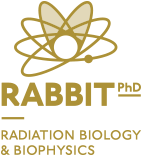Estudante de doutoramento do CEFITEC distinguido com prémio de melhor poster no 5º Congresso Doutoral em Engenharia

O estudante de doutoramento, Ricardo Silva, do grupo de Ciência de Superfícies e Tecnologia de Vácuo do CEFITEC, foi distinguido com prémio de melhor poster no Simpósio de Engenharia Física do Congresso Doutoral em Engenharia (DCE23), com o trabalho intitulado “Achievements and developments in design and simulation of ionisation gauges”.
Resumo do trabalho:
Ionisation vacuum gauges are unexpendable devices for pressure measurement in HV, and particularly UHV and XHV. However, most of their commercial realizations (e.g. Bayard Alpert gauge) are known for their lack of accuracy, mainly due to the lack of electrodes robustness and the changes in the contributions of unwanted phenomena that occur during the operation. Among the latter, the most critical are photoelectron and ion induced electron emission from an ion collector electron stimulated desorption of ions and neutrals, as well as electron backscattering from an anode. In the present work, we report a design and realization of a new hot cathode ionisation gauge aiming the suppression of these unwanted phenomena in order to obtain increased accuracy, stability and low-pressure limit. In this gauge, the primary electrons form a belt-like beam, following curvilinear paths in an electrode assembly resembling a cylindrical energy analyser, and end their trajectories in a Faraday cup, located inside the inner cylinder electrode. The ions created by electron impact with the gas are accelerated radially towards the ion collector, practically representing one of the electrodes of the "cylindrical energy analyser". The simulations of the operation, based on a recently developed approach, the construction details and the first experimental tests carried out with the first and second prototypes are presented. Details of the choice of the geometry of the Faraday cup and the inclusion of a suppressor electrode on the second prototype to inhibit secondary electron emission from the ion collector are also discussed.



